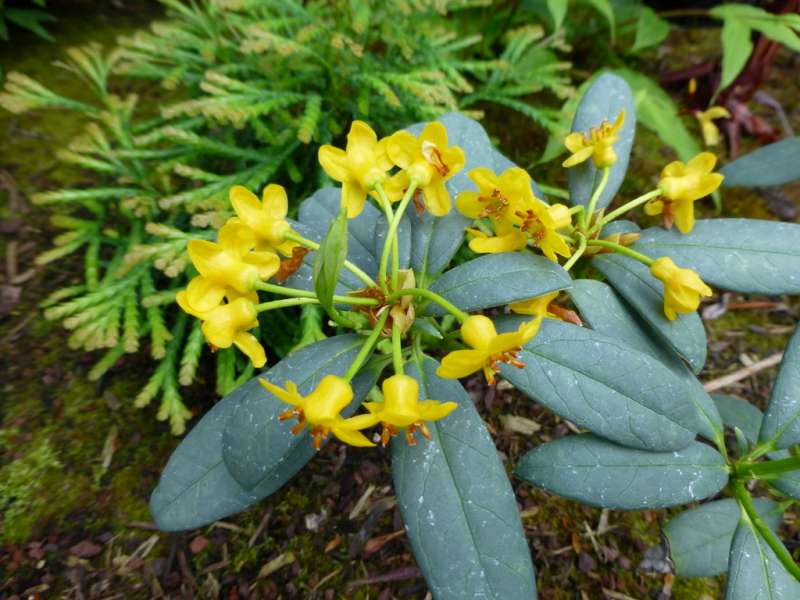
Rhododendron rushforthii



Rhododendron rushforthii

R. rushforthii. Foto: Steve Hootman
R. rushforthii. (Vireya) Blade 4:1 (L:B). Vildtvoksende ved 1800 m i N. Vietnam (Ban Khoang) og S. Kina
H. Eiberg
Flora of China
RBGE herbarium. R. rushforthii
Flora of China
Rhododendron rushforthii Argent & D. F. Chamberlain, New Plantsman. 3(4): 195. 1996.
Small shrubs, perhaps epiphytic, to 1.5 m tall; older shoots ash-gray. Petiole 8–15 mm; leaf blade thick, glaucous, especially
when young, elliptic, 1.8–11 × 1.7–4.2 cm; base cuneate, narrowly decurrent; margin cartilaginous; apex broadly acute, apiculate;
abaxial surface scales scattered, brown; adaxial surface scaly, at first silvery, turning brown and quickly lost, midrib and
lateral veins impressed. Inflorescence terminal, umbellate, 3–8-flowered. Pedicel 1–1.4 cm; calyx lobes 3–4 mm, triangular,
unequal; corolla shortly campanulate, yellow, 1–1.5 cm, tube 4–7 mm, outer surface finely scaly, mouth hairy; stamens 10,
0.8–0.9 cm, filaments hairy in lower half though glabrous at base; ovary ca. 4 mm; style arched, ca. 5 mm; stigma capitate.
Capsule not known. Fl. (in cultivation) Jun.
Probably epiphytic, also mossy banks. S China (see note below) [N Vietnam].
This species is closely allied to Rhododendron datiandingense, and may be conspecific, although the flowers are significantly
larger. The glaucous leaves are a significant feature of R. rushforthii. It was originally described from Lao Cai
Province, N Vietnam, close to the border with S Yunnan at Pingbian. It is known from cultivated material said to have come from S China.











